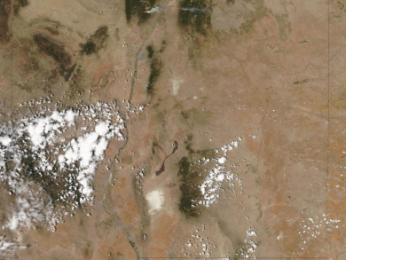The carbonaceous particles rising high into the air in the context of wildfires significantly degrade air quality, damage human and wildlife health, and interact with sunlight to affect climate. But measurements taken during the 2011 Las Conchas fire near Los Alamos National Laboratory show that the actual carbon-containing particles emitted by fires are very different than those used in current computer models, providing the potential for inaccuracy in current climate-modeling results, as Science Daily reported. [1] "We've found that substances resembling tar balls dominate, and even the soot is coated by organics that focus sunlight," said senior laboratory scientist Manvendra Dubey, "Both components can potentially increase climate warming by increased light absorption." The Las Conchas fire emissions findings underscore the need to provide a framework to include realistic representation of carbonaceous aerosols in climate model, the researchers say. They suggest that fire emissions could contribute a lot more to the observed climate warming than current estimates show. [1] http://www.sciencedaily.com/releases/2013/07/130709124153.htm

